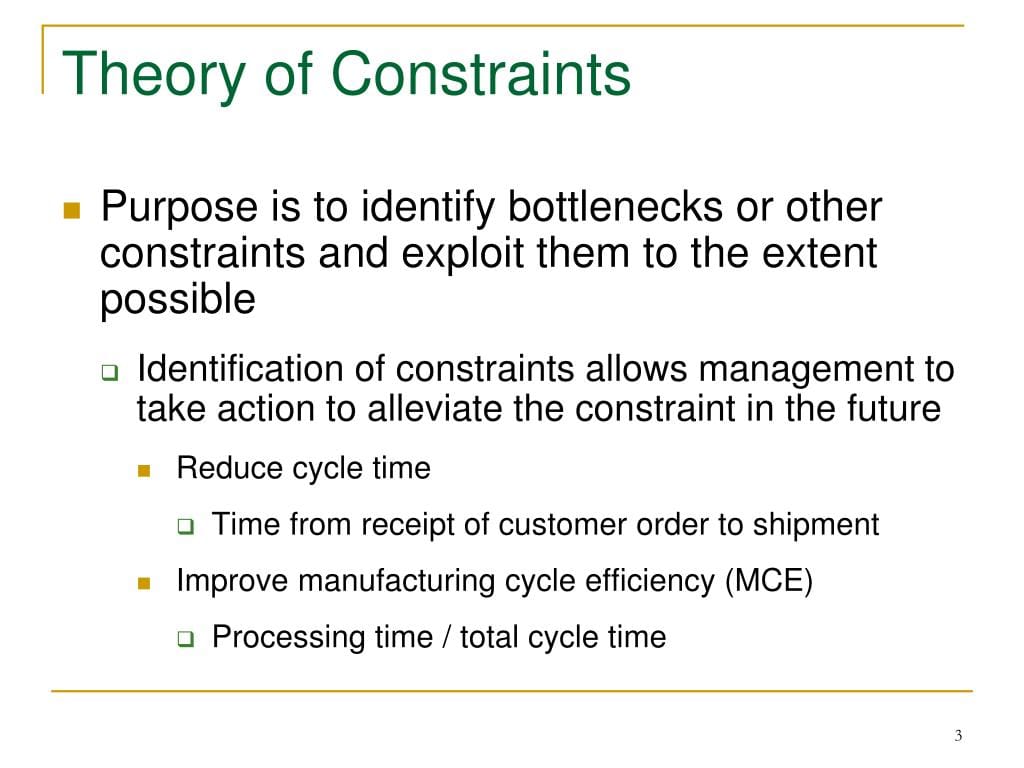Introduction
Have you ever spent half the evening refreshing rental listings, only to watch each one disappear before you can hit “apply”?
That’s life when vacancy sits barely above one percent nationwide—just a handful of empty homes for every hundred people looking. New supply isn’t catching up either: building approvals keep drifting lower, and the trades needed to turn approvals into actual houses are booked solid months in advance.
The big picture? Australia’s housing pipeline is acting like a single-lane bridge on an otherwise wide highway. Using the language of the Theory of Constraints (TOC), that bridge is our constraint—the slowest step that throttles everything behind it. Treat the pipeline like a system, focus on the constraint first, and the traffic starts flowing again.
What if government treated slow approvals or scarce tradies as the drum of the housing system and synchronised every other policy lever to it?
Stick around as we test that thought. Australia’s housing crisis isn’t one giant mess—it’s a few stubborn bottlenecks. Fix the drum, and throughput (new homes) will rise.
1 | Why Your Rent Keeps Climbing: Meet the Bottleneck
Finding a rental these days can feel like hunting for a toilet after smashing a fiery green curry—every second counts, and options vanish fast - till your left with the closest "modesty" bush/tree and a Gympie Gympie leaf for toilet paper 💥🍑.
National vacancy sits at about 1.3 percent—tight enough that almost every advertised place is snapped up in days.
Now trace the pipeline that’s meant to add fresh homes: in April 2025, dwelling approvals slid another 5.7 percent. That’s fewer future builds getting the green light.
Even when a project is ready to lodge plans, it hits a paperwork queue. Councils in New South Wales—one of the busiest markets—take roughly 113 days on average to decide a standard development application, and some stretch far longer.
Put simply, demand is sprinting while supply jogs.
The Theory of Constraints would call those slow approval desks—and, next in line, a stretched builder workforce—the drum that sets the pace for the whole show. Until we tune policy to that beat, rents keep marching upward.
2 | TOC & Drum-Buffer-Rope
Imagine a three-lane motorway squeezing down to one lane. No matter how hard everyone floors it in the wide sections, traffic crawls until that tight spot clears. That pinch-point is the constraint.
Eliyahu Goldratt’s Theory of Constraints (TOC) says every complex system—factory, hospital, or national housing pipeline—has at least one such pinch-point. Instead of “optimising everything,” you:
Theory of Constraints (TOC) basics
- Find the constraint – the slowest step.
- Exploit it – keep it running, no downtime.
- Subordinate everything else – pace every other step to match the constraint.
- Elevate – add capacity when it’s worth the cost.
- Repeat – the constraint will eventually hop elsewhere.
Drum-Buffer-Rope (DBR) is TOC’s daily rhythm-keeper:
- Drum: the constraint sets the beat.
- Buffer: a protective cushion (time, stock, or skills) so the drum never starves.
- Rope: a signal that releases new work only when the buffer is healthy—stopping traffic jams upstream.
If council approvals are our drum, a buffer could be a fast-track panel that keeps a few spare slots open, and the rope would be a portal that issues new permits only when that panel isn’t overloaded.
3 | Mapping Australia’s Housing Pipeline—Where’s the System Choke Point?
Think of the path from “paddock” to “keys-in-hand” as a relay race. If one runner slows, the baton stops moving—no matter how fast the others sprint.
Here’s where the baton is stalling today.
| Stage | What You See on the Ground | Hard Data Snapshot | “Drum” Likelihood* |
|---|---|---|---|
| Land-use & zoning | Limited greenfield lots; NIMBY backlash in infill suburbs | Qld just launched a $2 bn trunk-infra fund to unlock ≈160 000 lots statewide | 🟡 Maybe |
| Planning & approvals | Builders waiting months for permits | DA times blew out to 113-114 days on average; one NSW council now averages 238 days | 🔴 Top contender |
| Site infrastructure | Subdivisions stalled for roads, sewers | $2.2 bn “trunk-infrastructure funding gap” flagged by QLD councils; Budget 24-25 set aside $1 bn nationally | 🟡 |
| Labour & materials | Trades booked out; cost blow-outs | Industry needs ≈130 000 extra workers in 2025; average house completion time up 50 % since 2019 | 🔴 Co-drum |
| Finance & settlement | Buyers hesitate on high rates | KPMG notes interest rates will remain the “main price driver” through 2025-26, muting demand | 🟡 |
*🟡 = possible constraint; 🔴 = most likely drum today
Walking the Line—Stage by Stage
Land-use & zoning
Queensland’s pledge to bankroll trunk services and free up 160 000 lots shows land isn’t inherently scarce—it’s constrained by lead-in utilities and politics.
Planning & approvals
This is where the wheels really wobble: typical councils take three to four months; the slowest now need almost eight. That lag alone can add ~$40 000 in holding costs to a townhouse project.
Site infrastructure
Even approved estates stall without roads, water, and sewers. Local Government Association of Queensland warns of a $2.2 bn shortfall; Canberra chipped in $1 bn, but delivery lags remain.
Labour & materials
The Home Builder-era surge still clogs worksites: average completion times jumped from ~6 months to ~9 months. Add a 130 000-worker hole and you’ve got a textbook bottleneck.
Finance & settlement
Higher mortgage rates slow pre-sales, which in turn delay project finance. It’s a speed bump, but unlike approvals or labour, it isn’t the slowest stretch everywhere.
So, what’s the drum?
The numbers point to two clear front-runners: council approvals and skilled labour. One controls when a project can start; the other controls how fast it finishes. Everything else—land release, infrastructure, even finance—can only move as fast as those two steps allow.
4 | What if?: Which Drum Should We March To?
Time for a thought experiment: what if Australia picked one stage in the pipeline as the drum and tuned every other policy lever to that beat? Let’s test-drive two rival scenarios—no crystal ball needed, just plain logic.
A. Scenario 1 — Council Approvals as the Drum
- Exploit it
- Publish live dashboards showing how many applications each council clears weekly.
- Set a national service-level goal—say, most routine DAs handled in under three months.
- Buffer it
- Create state-run fast-track panels for code-compliant medium-density designs.
- Keep a few spare panel “slots” open so a surge of lodgements doesn’t choke the queue.
- Rope it
- A central portal releases new building-permit numbers only when panel capacity is healthy, stopping paperwork pile-ups before they start.
Upside: Early wins—shaving weeks off approvals slices holding costs straight away.
Downside: If tradies aren’t lined up, sites could still sit idle with fresh permits.
B. Scenario 2 — Skilled Labour as the Drum
- Exploit it
- Map real-time trade availability by region; green-light new projects only where crews exist.
- Buffer it
- Fund “flying squads” of carpenters, brickies and concreters who can plug urgent gaps.
- Expand pre-apprentice boot camps and fast-track visa channels aimed squarely at the current skills shortfall.
- Rope it
- Lenders release the next loan tranche only when a project’s labour buffer is healthy—no crew, no concrete.
Upside: Tackles the hardest physical constraint; steadies build times and wages.
Downside: Permits still matter; without smoother approvals, labour may be ready but waiting.
*You can’t pick both drums—subordinating everything to two masters is a recipe for chaos. There can be only one!
5 | How a National Drum-Buffer-Rope System Could Actually Work
Picture Canberra running housing the way an air-traffic controller guides planes: one radar screen, one slowest “plane,” and every other flight slotted so nobody circles for hours. That’s Drum-Buffer-Rope (DBR) for homes.
5.1 Pick the Drum — Make It Public
- Choose a single, clear metric. A good candidate is approved lots per quarter; it’s already tracked and links straight to future builds.
- Publish it weekly. Colour-code like a traffic light: green (on pace), yellow (slipping), red (stalled). When the light turns yellow, everyone knows which lever to pull.
5.2 Build the Buffers-Keep the Drum Fed
| Buffer | What It Looks Like | Why It Matters |
|---|---|---|
| Time buffer | State-run fast-track panels that can absorb a rush of applications without blowing the queue. | Stops the approvals desk from starving the pipeline. |
| Skills buffer | Extra TAFE spots and priority visas lined up months ahead. | Ensures crews are ready the moment permits land. |
| Materials buffer | Bulk-buy agreements for timber and steel, released when prices spike. | Cuts the risk of site stoppages and price shocks. |
| Innovation buffer | National Construction Code guidelines that welcome prefab and modular builds. | Adds “surge capacity” without needing more tradies overnight. |
5.3 Tie the Rope — Throttle Upstream Release
- Digital dashboard: Developers get new building numbers only when the approvals buffer is healthy.
- Finance hook-up: Banks see the same dashboard; no green light, no loan draw-down. That keeps the work queue in sync with real capacity.
5.4 Keep Everyone Honest
- Monthly “buffer health” briefings in Parliament.
- Automatic escalation: if the drum stays yellow two weeks straight, the housing minister must present a fix within 48 hours.
6 | Throughput Accounting for Housing—Follow the Money, Not the Unit Cost
Most housing debates chase line-item savings: cheaper bricks here, a subsidy there. But Throughput Accounting (Goldratt’s money lens) flips the question from “How much did each house cost?” to “How many finished homes did the system hand over this month?”
| TA Metric | In Manufacturing | In Housing Policy |
|---|---|---|
| Throughput (T) | Sales $ per hour of the constraint | Keys-handed-over per month |
| Inventory (I) | $ tied up in WIP and stock | Unfinished or stalled dwellings |
| Operating Expense (OE) | All other money spent to turn I into T | Public subsidies, interest during build, admin overhead |
Why it matters: a policy that halves DA wait times may not slash the cost of a single house, but it frees up finance sooner, lowers total interest, and—most importantly—pushes more keys across the finish line every month. In TA terms, rising throughput beats penny-pinching every time.
Example
- Current national Throughput ≈ 15 000 completions/month (180 000 a year).
- The Accord target needs 20 000+/month.
- If faster approvals lift T by just 2 000 homes/month, that’s an extra 24 000 dwellings a year—enough to fill Victoria’s entire rental shortfall.
If approvals pick up pace and builders finish just a few hundred extra homes each month, those completions ripple through the rental market far faster than a one-off grant shaved onto construction cost.
7 | Five-Year Roadmap (2025 → 2030): Turning Talk Into Roofs
You can’t fix a jammed pipeline overnight, but you can set a rhythm and nudge the tempo up year by year. Here’s a practical, one-drum-at-a-time timetable the Commonwealth and states could follow.
| Year | “Exploit” Move – squeeze more from the drum | “Elevate” Investment – add capacity | Success Signal |
|---|
| 2025 | Name the drum. Publish a weekly traffic-light dashboard for development approvals. | Pilot 90-day fast-track panels in at least three capital-city councils. | Average approval time starts trending down, week on week. |
| 2026 | Roll fast-track panels statewide; councils that miss the new service target lose access to certain federal grants (carrot and stick). | Kick-off a $1 b infrastructure fund for the roads, sewers, and power that make lots truly build-ready. | Most routine DAs clear in under three months. |
| 2027 | Shift focus to skills. Map real-time trade availability and pace new project launches to the green zones. | Expand TAFE places and priority visas aimed squarely at the well-publicised trade shortfall. | Site start-to-lock-up times begin to shrink. |
| 2028 | Buffer materials. Lock in bulk-buy contracts for timber and steel and release stock only when prices spike. | Update the National Construction Code to give prefab and modular equal footing—adding surge capacity without more labour overnight. | Fewer builds stall for missing frames or bricks. |
| 2029 | With approvals, skills, and materials running smoother, the drum will likely hop to finance. Bring in a shared-equity “rope” that meters loans so commencements stay in sync with available labour. | Scale the infrastructure fund if lot approvals start to outpace serviced land. | Monthly completions track close to the national housing target. |
Remember: Exploit → Buffer → Rope → Elevate → Repeat. Each year’s move either tightens the rope around the current drum or adds capacity so the drum can speed up—until the constraint hops to the next weakest link.
D-B-R is a loop, not a ladder—each year you still watch the dashboard. If the drum slips back to yellow, you tighten buffers before piling on new projects. Focus on approvals first, skills next, materials after that—moving the slowest link each year—until the housing beat stays green and steady.
8 | What Could Go Wrong? (And How to Keep the Wheels On)
Here are the three most likely issues—and the buffers that keep the drum beating.
Even the neatest Drum-Buffer-Rope plan can wobble once it meets real-world councils, budgets, and weather. Here are four likely potholes—and the buffers that keep the drum thumping.
- The drum moves.
- Risk: Once approvals speed up, the slowest step might suddenly become labour or materials.
- Buffer fix: Review the dashboard monthly. If a new red light flashes, resize buffers and shift focus—don’t wait for a crisis.
- Neighbour push-back.
- Risk: Medium-density projects stall when locals cry “over development.”
- Buffer fix: Use design pattern books and code-compliant fast-track panels—clear rules leave less room for endless debates.
- Cost spikes.
- Risk: Timber or steel prices jump and sites down tools.
- Buffer fix: Bulk-buy contracts or state stockpiles that release extra supply when prices surge.
- Quality shortcuts.
- Risk: Rushing to hit targets can tempt corners to be cut.
- Buffer fix: Tie fast-track approvals to strict inspections and transparent defect registers—speed should never trump safety.
9 | Conclusion – March To One Beat, Build Many Roofs
Housing policy often feels like a game of Whac-A-Mole: trim a cost here, add a FHOG (First Home Owners Grant) there, hope something sticks.
TOC says ditch the mallet—find the slowest mole, feed it, and let the rest fall in line.
If approvals are today’s bottleneck, protect them with fast-track panels and clear rules. When that drum speeds up, the baton will likely pass to labour—so have the training and visa buffers ready. After that? Maybe materials, maybe finance. The beauty of a live dashboard is you don’t have to guess; the red light tells you where to look next.
By naming a single drum (today that’s the approvals bottleneck), shielding it with smart buffers (fast-track panels, trade-training pipelines, material stockpiles) and releasing work only when the drum is healthy, government could turn a 240 000-home annual slog into a steady 250 000-home cadence.
Stick to the rhythm—drum, buffer, rope, repeat—and the housing pipeline goes from lurching to cruising. More keys change hands, rents ease, and first-home buyers finally catch a break.

Further Reading


















